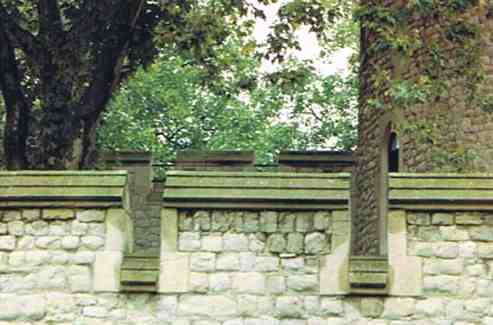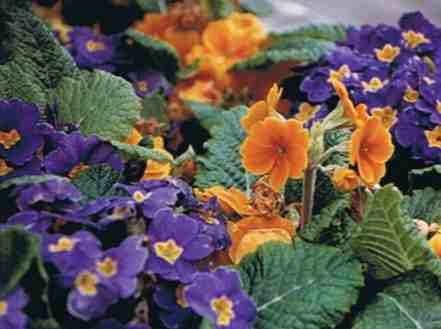How To Protect Plants So They Survive
When You Travel
We've given you tips on how you can protect plants outdoors when you travel, including patio containers, annuals and vegetable gardens, as well as your yard and landscape.
Inside house plants can be a bit trickier to keep alive and healthy when you're on an extended trip.
But there are ways to prepare your indoor potted plants so they can survive, and even thrive when you travel overseas, whether you'll be gone for a few days or a few weeks.
In exchange for a bit of time and effort, we have some easy tricks you can use to protect plants liv-ing indoors from suffering or dying, when you have an extended period of absence.
Of course, a great option is to have a friend or neighbor come into your home while you're away and water your in-house plants at least once a week.
Someone who grows indoor plants themselves will probably do this for you, especially if you offer to reciprocate for them when they travel.
But if you can handle a bit of additional pre-travel preparation, you can do it yourself before you go and protect plants inside your home, so they survive comfortably until you return.
Your plants will reward you by staying beautiful, and they'll thank you for the extra time you spend to insure their needs of light and water are provided.

3 Proven Ways To Protect Plants While You're Away
Most common indoor potted plants will survive a week or 10 days without addi-tional water, if you've watered them thoroughly before traveling.
It's for longer trips you need to decide whether to enlist outside help or go it on your own.
The following ideas will help you protect plants you grow indoors and keep them healthy and happy while you're away:
The Tub Method
After watering indoor potted plants thoroughly, place them in a bathtub on top of large soaking-wet towels. Place other soaked towels intertwined between the pots, placing them close together to absorb moisture from the towels and holding the towels in place.
[This works best with unglazed terra cotta pots that absorb moisture through their walls, but will also work for glazed pots with bottom drainage holes to wick up moisture.]
Close the tub drain, and add 1/4 - 1/2 inch of water to the tub, depending on how thick your towels are. Use just enough water to keep the bottom towel saturated with water.
Your plants will wick moisture through the drainage holes in the pot bottoms and into the intertwined towels.
Do not let water stand in the tub above the bottom towels. This will drown your plants.
Cover your plants lightly with a layer of clear plastic to hold in humidity. A clear plastic drop cloth is perfect. You can find them in the paint department of your local big box store.
Prop the plastic slightly above the plants, or tape it to the tile surround of your tub. Keep it high enough, so it doesn't lay directly on plant leaves.
This will create a greenhouse effect, maintaining a moist environment that will protect plants from drying out.
Place a small, low-watt lamp on your toilet, bathroom counter, or nearby solid surface. Do not put anything electrical on the side of the tub!
Or replace a bulb in your overhead light with one small wattage bulb: 40-60 watts max. If your overhead light has multiple bulbs, loosen all but the one you replace, so they no longer emit light. You only need a single low light source.
There should be just enough light in the room to keep your plants out of complete darkness, but not enough brightness for them to grow toward the light.
Close the bathroom door to secure the plant-friendly environment you've created.
Do this a day or two before travel in a seldom-used bathroom, and don't disturb the setup before you leave. Inside house plants will survive nicely for 2-3 weeks.
The Bottle Method
You can protect plants in pots that are too large or heavy to move by drilling a small hole [approximately 1/8"] into the plastic top of an empty [and clean] litre-size soda bottle*.
Fill the bottle with water and up-end it securely into the soil of large house plant, propping it as necessary, so it doesn't roll over or fall out.
Water should drip from the hole in the top and keep the soil damp and the plant hydrated until you return from your travels.
Do this several days before travel to make sure water drips from the bottle. If not, adjust the bottle or enlarge the hole, until water seeps slowly into the soil.
*Alternatively, you can use 2 or 3 smaller bottles, such as plastic water bottles, but adjust each hole smaller, so the total water seeping out equals that of a larger hole in a larger bottle. A very small nail should do the trick.

The Cord Method
Another way to protect plants that are too large to move - or smaller plants you don't wish to move - is to use a length of heavy cotton cord or small natural fiber rope. Insert one end of the rope into a plastic bottle filled with water [an empty milk jug works fine]. Lay at least 18 inches of the other end of the cord on top of the plant soil, coiling it loosely around the base of the plant.
The cord must be cotton or some other natural fiber in order to wick moisture from the water-filled container onto the plant's soil and keep it from drying out.
If the plant is mulched, pull back the mulching material and lay the wicking cord directly on top of the soil at the base of the plant. Replace the mulch on top of the cord, once you know wicking is taking place.
[It's best to have mulching material cover the cord, to help keep the wicked moisture from evaporating into the air.]
~ ~ ~
I've used each of these methods with much success to protect plants while traveling overseas for up to 3 weeks. The important thing is to try them out before you travel, and make necessary adjustments to see which idea works best for you.
With a bit of effort and advance travel preparation, it's possible to protect plants inside your home before you travel. They'll be waiting for you, healthy and happy, when you return.
For more ideas on how to protect plants, pets, valuables, personal possessions and your home in general when you travel out of town, check out the following pages:
Protect what matters most before traveling: your kids and pets.
Make the inside of your home as safe and burglar-proof as the outside before travel.
Travel Tip
If you keep cacti, succulents, orchids, or exotic houseplants of any kind that require specialized care, make arrangements to have them looked after by a knowledgeable gardening friend while you travel. Plants, like animals - once domesticated - can seldom fend for themselves.
Return to Homepage | Return to Top....
Updated Travel Topics
Make Your Packing Easier and your Trip More Organized...

Packing Cubes from eBags

Our Readers Say...
Thanks for providing all these awesome resources for travel addicts on your website! ~ Sally D./Canada
I enjoyed looking through your website, especially the article you've written about yourself and your passion for travel. I share the same passion. ~ Theresa C./US
This is the first time I’ve visited your site, and it's fantastic. I think it's a terrific resource as an all-travel portal. ~ Steven F./US
I’ve been reading your blog, travel-safe-travel-smart.com and found the article 'Use The Best Travel Guides To Plan Your Trip' extremely interesting. ~ Jessica B./US













